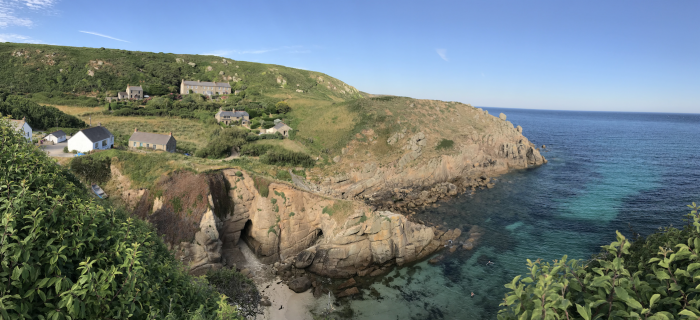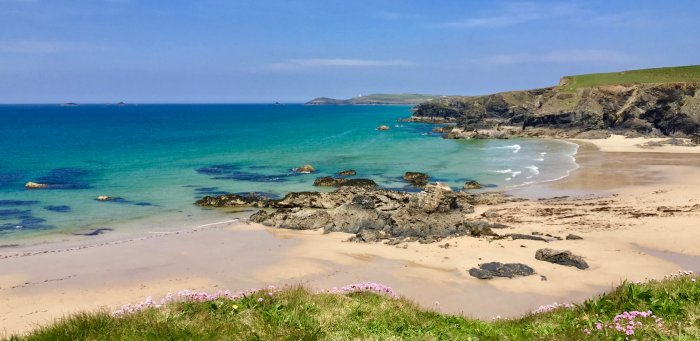Cornwall’s spectacular scenery showcased in Poldark TV Series
The tumbling waves and dramatic coastline of Cornwall took the lead role in the much-loved Poldark novels. It was only a matter of time until Winston Graham’s novels hit our screens again with the award-winning TV series full of romance, drama and of course eye-catching Cornish locations. During the series, there is no shortage of clear blue waters, golden sands and original 18th century mines that can be recreated in to your own adventure.

Charlestown
One of the world’s most unspoilt historic harbours, Charlestown is a pristine example of a late Georgian working port and fishing village. Charlestown port is located on the south coast of Cornwall and was constructed in the late 18th century by Charles Rashleigh in response to the expansion of the local mining industry. The port was built to export copper, coal and china clay, Cornwall’s ‘white gold’.
The unique character of the port and the magnificent square rigger ships found in the harbour has made Charlestown a popular film and television location. As soon as you enter the village you feel like you are transported back in time. Charlestown posed as Poldark’s Truro throughout the series.

Porthcurno
Porthcurno may be most famous for the iconic Minack Theatre, Cornwall’s outdoor theatre built into the rugged cliffside, but it was also picked as one of the locations that posed as Nampara Cove in Poldark. Described by some as paradise, it’s easy to understand why – with white sands and water that turns turquoise in the sun, Porthcurno is an outstanding area of natural beauty.
Ross and his wife Demelza spent a lot of time on this beach, especially in season two. Take the coastal path from Porthcurno to Porthgwarra, to see the location where Ross took his famous sea dip.

Porthgwarra
Porthgwarra is Britain’s most south-westerly cove and was used as the location where Demelza secretly spied on Ross taking a swim from the cliff tops in season one. The small unspoilt cove and fishing hamlet provides some of the most picturesque scenery for Poldark and is located close to Porthcurno, Poldark’s Nampara.

Port Quin
Port Quin in North Cornwall is a tranquil cove with a natural harbour and located just a couple of miles around the corner from the charming village of Port Isaac. The hamlet is prone to is a delightful place to visit with calm and clear waters during the summer months, making it a relaxing spot for swimming.
Often referred to as the ‘Village that died’ Port Quin is a cove enriched in history and unfortunately is the location where the entire male population of the village drowned at sea whilst fishing during the 19th century.

Church Cove at Gunwalloe
A site of archaeological importance, Church Cove is a small sandy National Trust area that was used as the backdrop for Cornwall and Poldark’s shady smuggling past. The cast of Poldark filmed the night-time wrecking scenes on this cove and the 15th century church of St.Winwaloe located beside the cove was used as the location for the marriage between Dwight and Caroline.

Porthcothan
Backed by grassy dunes, Porthcothan beach located on the north coast of Cornwall is a beautiful sandy beach which opens out at low tide, connecting with small coves to explore on either side. The beach was used in Poldark for some scenes involving the landward side of Nampara and Hendrawna Beach.

Botallack and Levant Mine
The incredible mine at Botallack along with the nearby mines of Levant and Geevor form the Cornish Mining Heritage area known as ‘The Tin Coast’. The tin mining industry once dominated the Cornish landscape and in the series Ross Poldark worked in and owned the Wheal Leisure Mine located just a stone’s throw away from Land’s End. The stunning shots were taken at Botallack Mine, which is a National Trust site near St Just on the Penwith Peninsula. The mines and engine house created a spectacularly dramatic coastal landscape and have been cleverly reconstructed for the TV series.

Bodmin Moor
Bodmin Moor is a vast area of remote moorland and offers many rural locations with breathtaking views and outstanding natural beauty. The exterior of Poldark’s house Nampara was shot on Bodmin Moor, as were the many scenes captured of the cast on horseback. The moors have been named as a site of Special Scientific Interest and have plenty of areas to explore, including Brown Willy, the highest point in Cornwall and Rough Tor, the bronze age hut circles.

